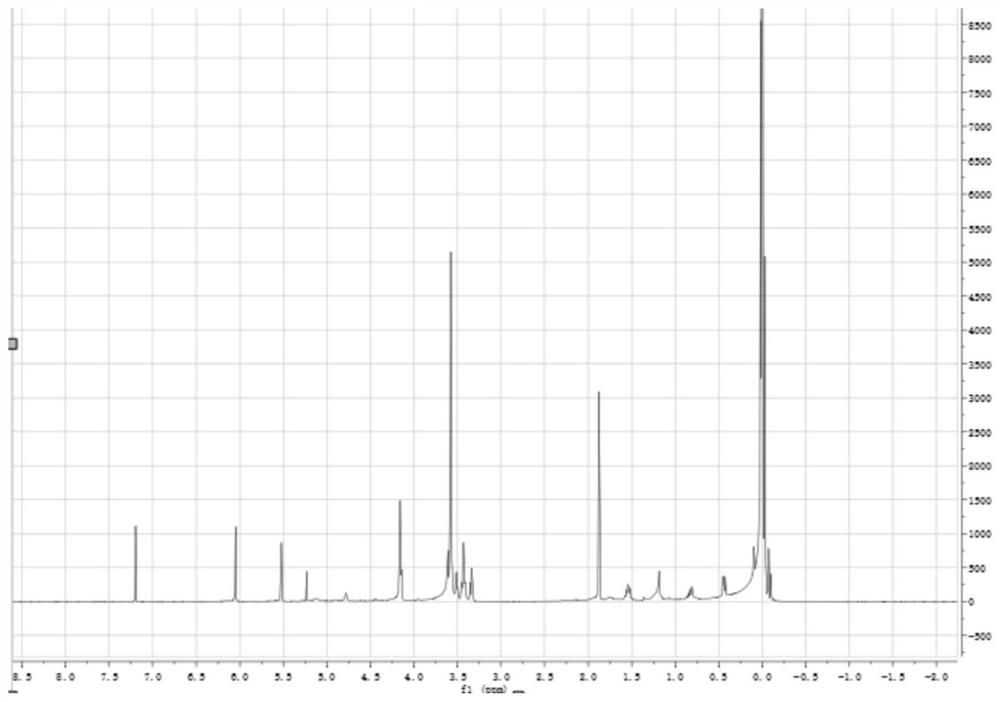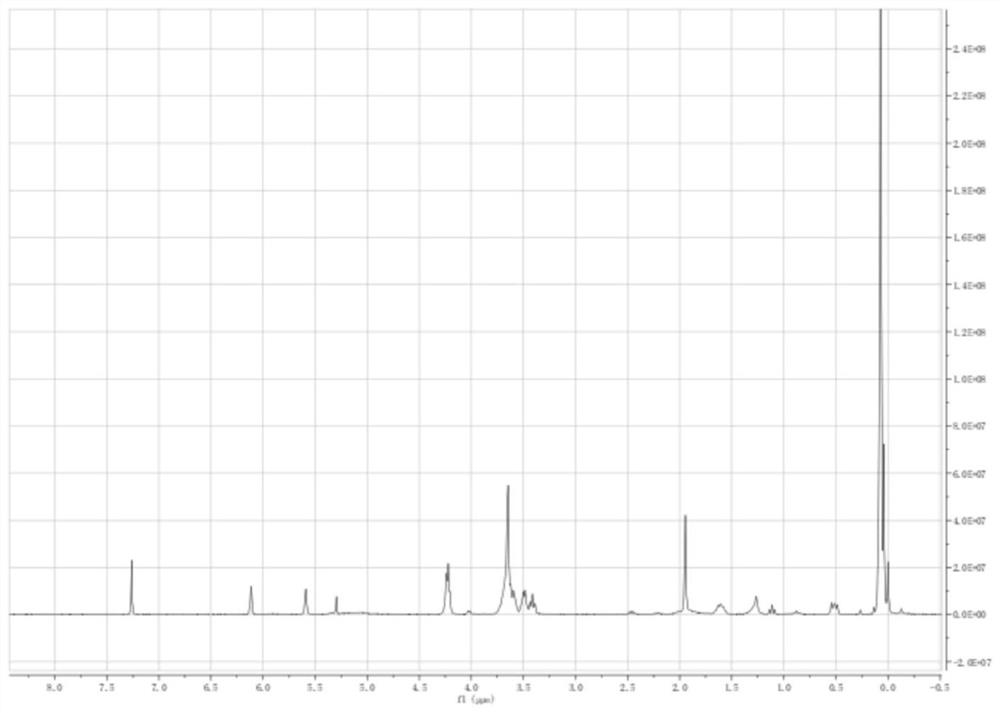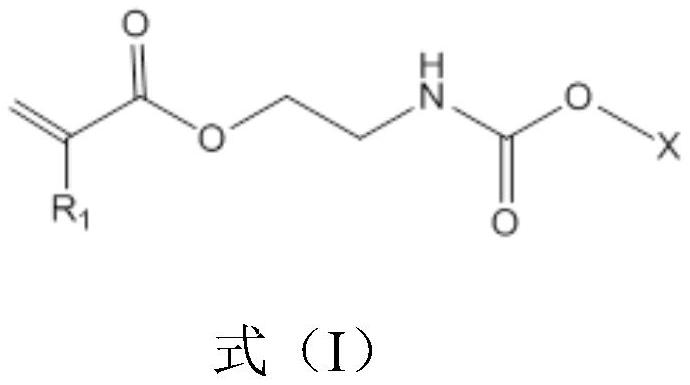Monocapped amphiphilic organosiloxane macromer, silicone hydrogel, contact lens and preparation method
A technology of organosiloxane and macromolecular monomers, which is applied in glasses/goggles, instruments, optics, etc. It can solve the problems of strong hydrophobicity on the surface of silicone hydrogel, affecting the wearing comfort of lenses, and limited dosage , to achieve the effects of being beneficial to eye health, excellent oxygen permeability and light transmission, and reducing the degree of crosslinking
- Summary
- Abstract
- Description
- Claims
- Application Information
AI Technical Summary
Problems solved by technology
Method used
Image
Examples
Embodiment 1
[0072] Preparation of Mono-terminated Amphiphilic Organosiloxane Macromers
[0073] Get HO-PDMS (number average molecular weight is about 1500, wherein m is about 7, n is about 16, purchased from Nanjing Fuqun Chemical Co., Ltd.) 30g, add 50mL dichloromethane (CH 2 Cl 2 ) and 0.1 g of dibutyltin dilaurate, stir and mix well. Then weigh the corresponding proportions of IEM and CH 2 Cl 2 Mix, add a constant pressure dropping funnel, add IEM and CH to the reaction dropwise 2 Cl 2 mixture. At the same time, the constant temperature water bath heating device was turned on, the temperature was adjusted to 55 °C, and the reaction was carried out for 10 h. After the reaction, rotary steam at 50°C for 30 min to obtain an organosiloxane macromonomer, denoted as M1-w1. figure 1 It is the nuclear magnetic spectrum of the single-end-capped amphiphilic organosiloxane macromonomer (M1-w1) prepared in Example 1.
[0074]
Embodiment 2
[0076] Preparation of Mono-terminated Amphiphilic Organosiloxane Macromers
[0077]Get HO-PDMS (number average molecular weight is about 5500, wherein m is about 11, n is about 50, purchased from Nanjing Fuqun Chemical Co., Ltd.) 50g, add 80mL CH 2 Cl 2 and 0.2g dibutyltin dilaurate, stir and mix well. Then weigh the corresponding proportions of IEM and CH 2 Cl 2 Mix, add a constant pressure dropping funnel, add IEM and CH to the reaction dropwise 2 Cl 2 mixture. At the same time, the constant temperature water bath heating device was turned on, the temperature was adjusted to 55 °C, and the reaction was carried out for 10 h. After the reaction, the reaction was completed by rotary steaming at 50 °C for 30 min to obtain an organosiloxane macromonomer, denoted as M1-w2. figure 2 is the nuclear magnetic spectrum of the single-end-capped amphiphilic organosiloxane macromonomer (M1-w2) prepared in Example 2.
[0078]
Embodiment 3-4
[0080] A silicone hydrogel prepared by polymerization of the following components:
[0081] 40 parts of mono-terminated amphiphilic organosiloxane macromonomers,
[0082] Methyl-bis(trimethylsiloxane)-silyl
[0083] 20 parts of propyl glycerol methacrylate (SIGMA),
[0084] 20 parts of hydroxyethyl methacrylate (HEMA),
[0085] 5 parts of N-vinylacetamide (NVA),
[0086] 15 parts of hydroxypropyl methacrylate (HPMA),
[0087] 0.5 part of 2-hydroxy-2-methylpropiophenone (D1173),
[0088] 0.5 part of ethylene glycol dimethacrylate (EGDMA),
[0089] Among them, the single-end-capped amphiphilic organosiloxane macromonomer was prepared by Example 1 and Example 2, respectively.
PUM
 Login to View More
Login to View More Abstract
Description
Claims
Application Information
 Login to View More
Login to View More - R&D
- Intellectual Property
- Life Sciences
- Materials
- Tech Scout
- Unparalleled Data Quality
- Higher Quality Content
- 60% Fewer Hallucinations
Browse by: Latest US Patents, China's latest patents, Technical Efficacy Thesaurus, Application Domain, Technology Topic, Popular Technical Reports.
© 2025 PatSnap. All rights reserved.Legal|Privacy policy|Modern Slavery Act Transparency Statement|Sitemap|About US| Contact US: help@patsnap.com



